Menus
- Part 1 comparison test on the racetrack
- 37 HP between the strongest and weakest bike
- Track test video
- Generation comparison of driver assistance systems
- Shift assistants and upshift assistants
- Skepticism about the anti-lock braking systems
- Aprilia RSV4 has an inkling of what the driver will do next
- Delicate braking behavior of the Yamaha YZF-R1
- Fast and smooth laps with Ducati 1299 Panigale S.
- BMW S 1000 RR begins to pump significantly at the rear
- Honda Fireblade SP keeps steering the smoothest
- There is great potential in the Suzuki GSX-R 1000
- Kawasaki ZX-10 R with weak torque
- The fascination of super athletes, the fascination of the racetrack
- Tires at the racetrack test
- Driver, route, data
- The Lausitzring
- Cross route, lake landscape, visitor mine
- MOTORCYCLE test results
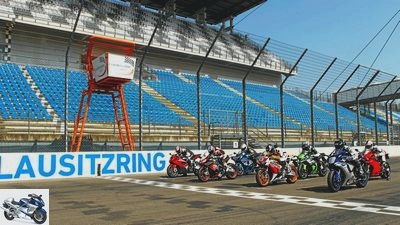
Bilski
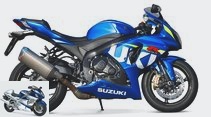

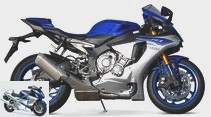
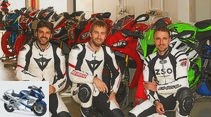
34 photos
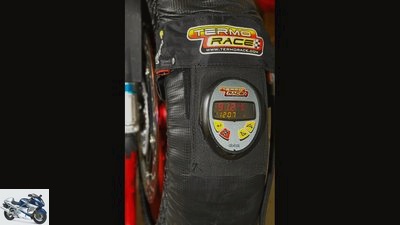
Bilski
1/34
Track test super athlete.
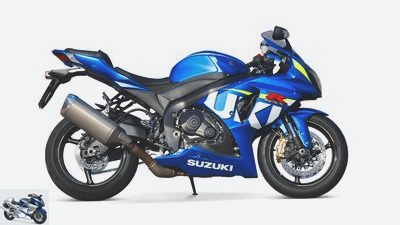
Bilski
2/34
… The fact that he chose the Suzuki for this high-speed posing speaks for its chassis qualities. Handy and reliable at the same time – this is how it can be briefly described. Unfortunately, Suzuki is only developing in the smallest of steps.
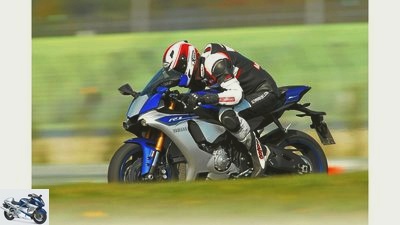
Bilski
3/34
Yamaha YZF-R1: It doesn’t have as much power in the engine as the BMW, but what it does get it onto the road much more efficiently …
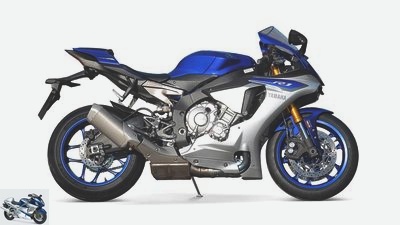
Bilski
4/34
… The sound and smooth running of the crossplane engine are just as fascinating as the high level of steering precision.
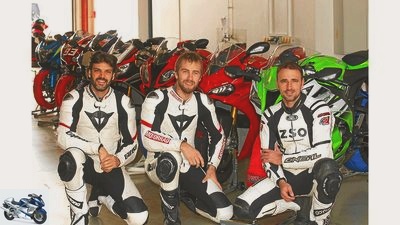
Bilski
5/34
Three drivers from three nations, from left: Sergio Romero (Motociclismo, Spain), Freddy Papunen (MOTORRAD, Sweden) and Christian Kellner (MOTORRAD, Germany).
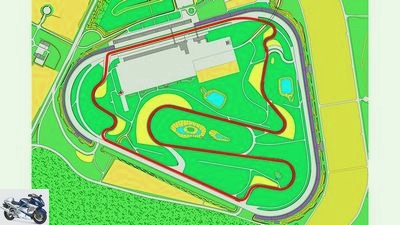
Bilski
6/34
“Everyone can be quick in the bend, but on the straights you have to win.” This cynical and wise racing driver’s saying is exactly what the conditions are at the Lausitzring. Except for a few subtleties.
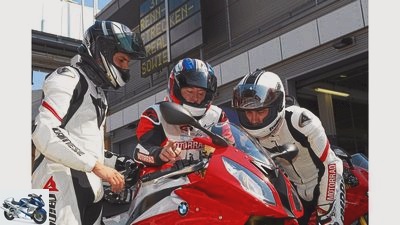
Bilski
7/34
Pushing instead of turning: Sergio, Karsten and Freddy (from left) adjusting the suspension.
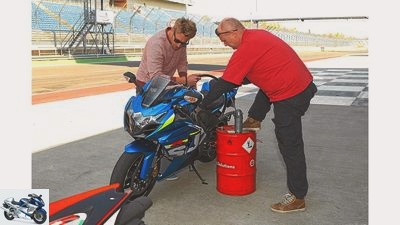
Bilski
8/34
Refueling by hand pump: Gerrit and Rainer tapped many barrels of high-proof fuel.
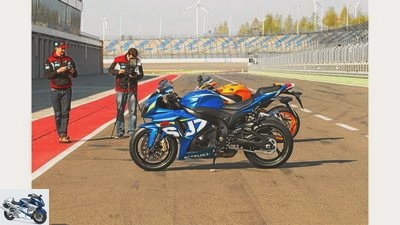
Bilski
9/34
Nils Muller (left) and Christoph Kugler from “1000ps.at” shot the videos – on and offboard.
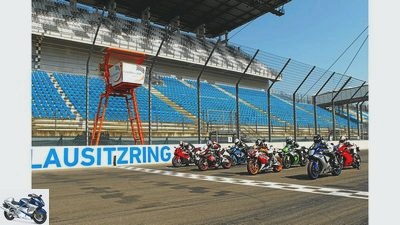
Bilski
10/34
Big cinema: start yourself with a super sports car in front of an impressive backdrop.
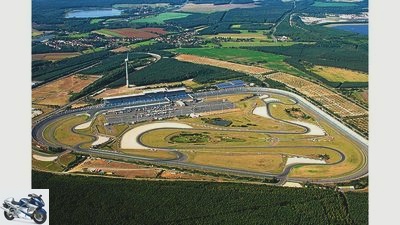
Bilski
11/34
Based on series for US racing cars, the outer route is a tri-oval. But on the inside it gets damn curvy.
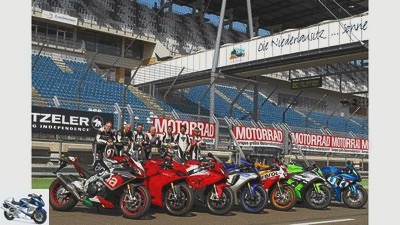
Bilski
12/34
The lap times are in the box. Now this photo, then the test freestyle can begin. From left to right: Ralf Schneider, Rainer Froberg, Christian Kellner, Karsten Schwers, Freddy Papunen, Sergio Romero, Thomas Schmieder.
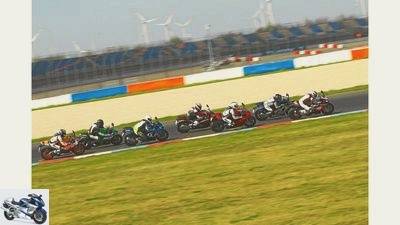
Bilski
13/34
This is not a real racing scene. But instead a colorful group portrait in a species-appropriate attitude.
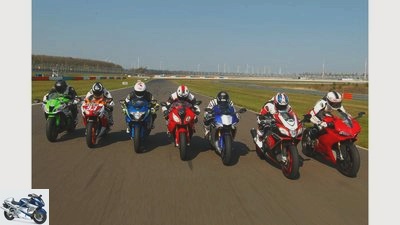
Bilski
14/34
Track test super athlete.
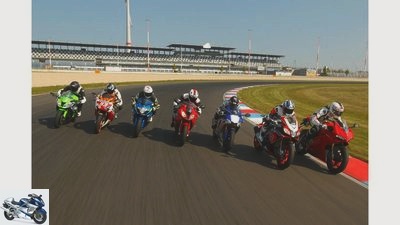
Bilski
15/34
Track test super athlete.
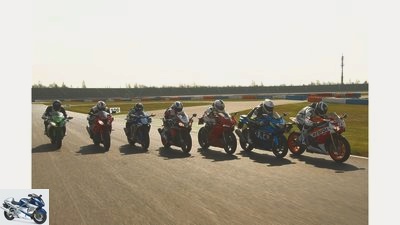
Bilski
16/34
Track test super athlete.
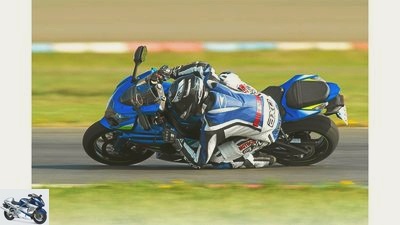
Bilski
17/34
Suzuki GSX-R 1000: “He’s crazy, the Spaniard,” said the photographer. The dear colleague Sergio smiled: “That was just posing” …
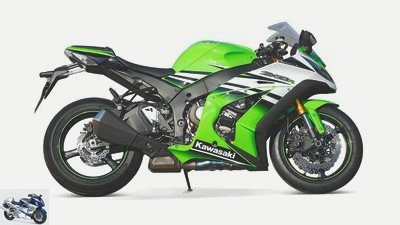
Bilski
18/34
… It is designed specifically for stability. The engine could use a torque injection from 8000 rpm, the assistance systems a few
Bonds from the World Cup machine.
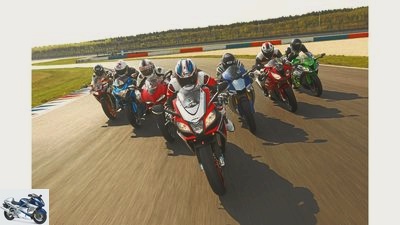
Bilski
19/34
These magnificent seven are at the forefront of motorcycle technology.
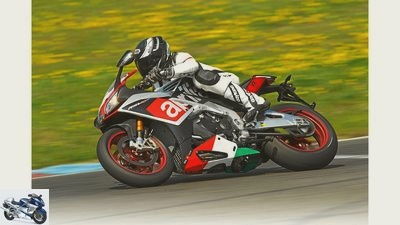
Bilski
20/34
Aprilia RSV4 RF: Actually, the revised RF – F for Factory – is limited to 500 copies. However, the technical features of the RF are also available for purchase as a race pack for the RR …
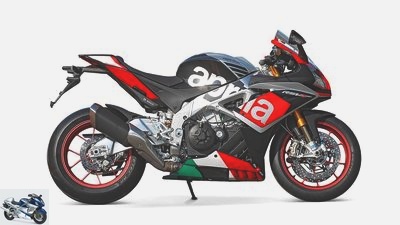
Bilski
21/34
… It includes lightweight wheels, Ohlins suspension elements and steering dampers. Both models have the engine, which has been boosted to over 200 hp, as well as the electronics. Only the design is reserved for the RF.
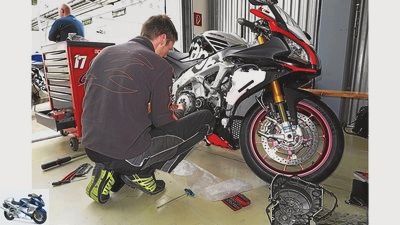
Bilski
22/34
Thomas Grebenstein changing the Aprilia clutch. The man is a virtuoso mechanic, all due respect.
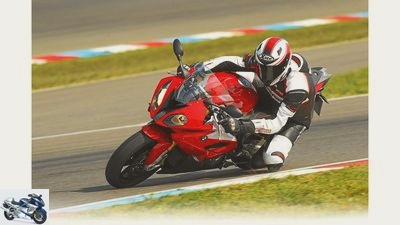
Bilski
23/34
BMW S 1000 RR: For 2015, BMW not only revised the magnificent engine, but also the chassis. It is much more manageable than its predecessor, but no longer as stable at high speeds …
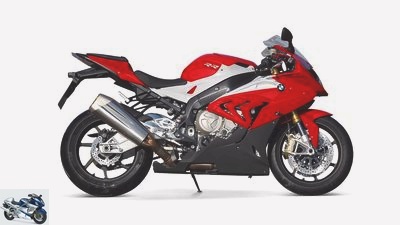
Bilski
24/34
… The electronics package covers a wide range of applications with the four driving modes. The only thing that needs to be done is fine-tuning the rear suspension.
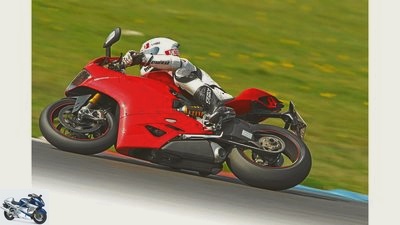
Bilski
25/34
Ducati 1299 Panigale S: The new Panigale distinguishes itself as a powerfully fast racetrack motorcycle with significantly more sophisticated and more torque than its predecessor …
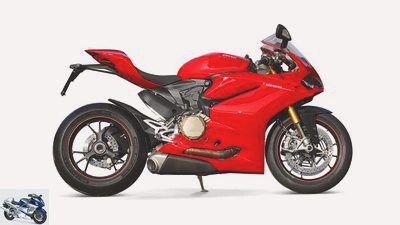
Bilski
26/34
… The operation of the various driver assistance systems needs to be learned, and on the racetrack it demands full physical effort from the driver.
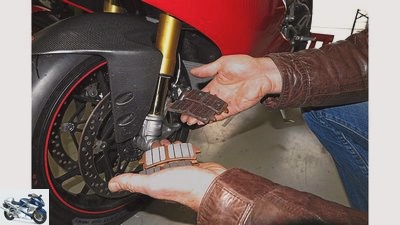
Bilski
27/34
The Eurospeedway eats brake pads, especially those of the Panigale, as an insider reported.
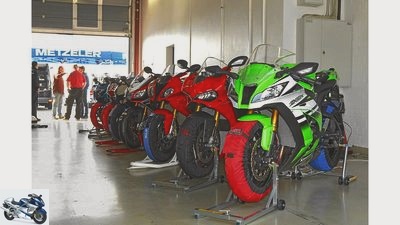
Bilski
28/34
Before the shootout: All seven super athletes are ready with new tires in electric blankets and wait until the track has warmed up enough.
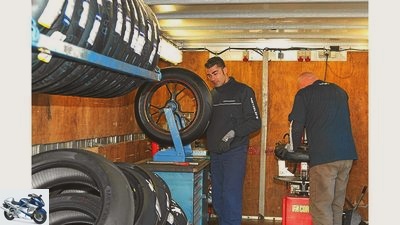
Bilski
29/34
Salvo Scandurra (left) and Hendrik Muller take care of the black gold. They assembled 14 sets of Metzeler Racetec RR.
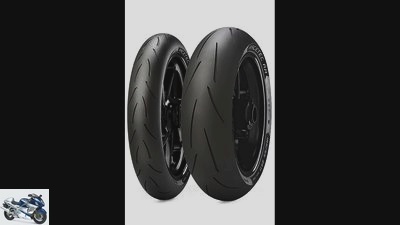
Bilski
30/34
You can recognize him from this profile picture, the new Metzeler Racetec RR. It is available in two versions.
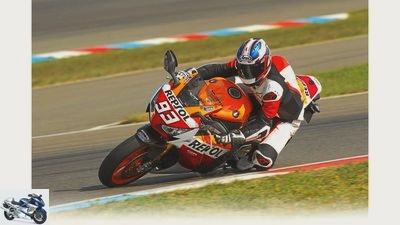
Bilski
31/34
Honda Fireblade: The chassis of the Fireblade presented in 2008 is still state-of-the-art, and on the SP model it has been refined with Ohlins suspension elements, Akrapovic rear silencers and lightweight wheels …
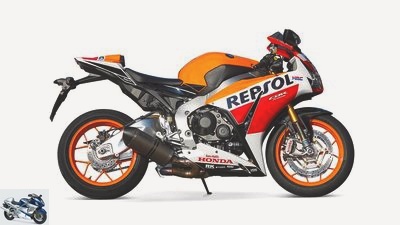
Bilski
32/34
… The combination of braking stability, handiness and steering precision is particularly impressive. In terms of engine power and electronics, Honda should now step up.
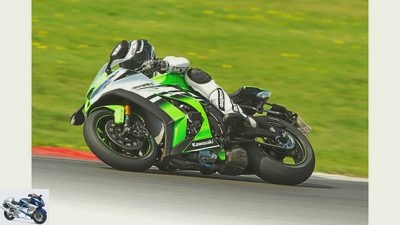
Bilski
33/34
Kawasaki ZX-10R: The Kawa is not the longest machine in the comparison, but it pulls its driver over the tank for a comparatively long time …
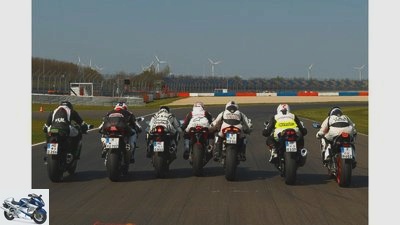
Bilski
34/34
Track test super athlete.
Seven super athletes in the track test
Part 1 comparison test on the racetrack
Aprilia RSV4 RF, BMW S 1000 RR, Ducati 1299 Panigale S, Honda Fireblade SP, Kawasaki ZX-10R, Suzuki GSX-R 1000 and Yamaha YZF-R1 are at the forefront of motorcycle technology. Whoever wins in this field deserves the Grand Prize in the end. Clear the start for the fastest test of the current season.
E.t was almost as international as a Superbike World Cup, this 1000-meter masterbike on the Eurospeedway Lausitz: there, drivers from Spain, Sweden, Upper Bavaria and Swabia, tire technicians from Italy, a photographer from Poland and a videographer from Austria met. The motorcycles came from Japan, Italy and Germany, the tires from the Metzeler factory in Hesse. They were assembled by a mechanic from Brandenburg. The official language was English, which could be heard colored in dialects from southern to central Europe to Scandinavia. And they all worked hand in hand.
Buy complete article
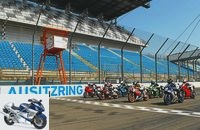
Seven super athletes in the track test
Part 1 comparison test on the racetrack
Ducati 1299 Panigale S at the start. These four give rise to this comparison. But don’t forget the Suzuki GSX-R 1000. Although it currently has ABS, it belongs to the older generation as well as the Honda Fireblade SP. Between them is the Kawasaki ZX-10R, equipped with ABS and traction control, but not with the highly developed sensors of the brand new bikes.
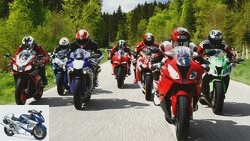
Super athlete
Seven sports motorcycles in the country roads classification
Part 2 comparison test on the country road
read more
37 HP between the strongest and weakest bike
Power and electronics – these are the areas where the biggest differences between older and new sports motorcycles are. This report will first devote itself to these two topics in order to deal with the individual motorcycles in the second part. The most powerful (BMW S 1000 RR) and the weakest motorcycle (Suzuki GSX-R 1000) differ in terms of maximum power from a whopping 37 hp. The “weakest” of the new machines was the Yamaha YZF-R1, which this time achieved almost 199 hp on the test bench. The Honda Fireblade SP with 180 hp is hardly better than the Suzuki. Especially since their power and torque curves are below those of the Suzuki GSX-R 1000 in almost the entire usable speed range. Only above 10,000 rpm does the blade gain the upper hand.
But Honda or Suzuki, the differences between these two and the plus / minus 200 hp squad are so great that they have a massive impact on the ability to accelerate between corners and thus on lap times. In road traffic, top performance at this level is certainly not an issue, on the racetrack it is. This applies to the measured values, but also to the subjective perception. With the Aprilia RSV4 RF you can even feel the difference to the previous model without a direct comparison. You only have to let yourself be carried away with relish by the RSV4 in the range of 10,000 rpm.
Track test video
Power alone certainly doesn’t make you fast, but a lot of power definitely helps for fast laps. This is shown by the four newcomers from the 200 hp league, namely Aprilia RSV4 RF, BMW S 1000 RR, Ducati 1299 Panigale S and Yamaha YZF-R1. Especially on the Eurospeedway, where the car accelerates four times to speeds of 240 km / h or more in the course of a lap. The recording curves of the Aprilia RSV4 RF and the Suzuki GSX-R 1000 on page 35 illustrate this test result with striking clarity. Only the members of the 200 hp club came under the threshold of 1.47 minutes, the Kawasaki ZX-10R with 194 hp was above it. The fact that it even had to admit defeat to the Honda Fireblade SP in one case is mainly due to a slack in its torque curve from 5000 to almost 11,000 rpm.
Subscribe to MOTORRAD videos on Youtube
Generation comparison of driver assistance systems
While the engine power has an almost unfiltered effect on the lap times, the influences of the various driver assistance systems are more difficult to determine in a generational comparison because they act discreetly like a series of small aids. The test setup for the lap time shootout consisted of sending three very good and experienced pilots out onto the track with new, preheated tires at a constant asphalt temperature and letting each motorcycle drive a limited number of laps. This ensures the best possible comparability. During five such “clean” laps, drivers with the skills of Christian Kellner, Freddy Papunen and Sergio Romero can move a motorcycle without traction control to the limit without any errors, no question about it. But wherever possible, they like to use a suitably set traction control with high control quality, leave the balance at the limit to the electronics and prefer to concentrate on other things.
You shouldn’t forget that superbikes aren’t just that fast. The higher speed affects the driver in the form of higher forces. In every moment of a lap. No wonder they accept any help they can get. In the long run, the qualities of the anti-lock braking systems, traction, wheelie and other controls really come into play. For example in those critical afternoon hours on both days when the testers, carried away by the dynamics of the motorcycles, got faster and faster, but encountered badly worn rear tires and their own burgeoning exhaustion. Then suddenly someone dived a little outside of the ideal area into the fast left after the start-and-finish straight, no longer hit the short right curve properly and rumbled over the inner curb to brake the following narrow left. And the other caught the sharp edge at the beginning of the home straight too far to the right, so that here the rear wheel lost contact with the ground when accelerating in an inclined position. In both situations, the drivers could rely on the electronics.
Shift assistants and upshift assistants
The shift assistants on the BMW S 1000 RR and Ducati 1299 Panigale S also proved to be very helpful. This is particularly true when braking or when the accelerator has to be briefly pulled up between two consecutive bends, but then quickly downshifted. They are the only ones that allow you to shift down without using the clutch and work perfectly. The system of the BMW S 1000 RR is a little better than that of the Ducati 1299 Panigale S, which is perhaps due to the smooth four-cylinder engine.
The pure upshift assistants of the Aprilia RSV4 RF and Yamaha YZF-R1 also proved their worth, especially in the acceleration zones after the widely drawn corners eight and nine. Not only because they shorten the switching pauses. Even more, because they make it possible to hold the wedging handlebars properly over the crests at full speed. It is not about suppressing the approach to the handlebars with one’s own strength, but simply about keeping your hands on the handlebars at all. The shift assistants were missing on the Honda Fireblade SP, Kawasaki ZX-10R and Suzuki GSX-R 1000 because two fingers on the left always had to operate the clutch. The Suzuki even required the clutch to be pulled very far, otherwise the next higher gear would not be right.
It would be going too far here to name all the different modes in which the individual riders let the motorcycles run for themselves. There was a tendency for the intervention of the traction controls to be greatly reduced, but nobody chose the most radical level or switched it off entirely.
Skepticism about the anti-lock braking systems
The anti-lock braking systems met with more skepticism. After a few long control processes of the Bosch ABS of the Aprilia RSV4 RF, Christian Kellner switched off the system, on the BMW S 1000 RR the ABS on the rear wheel is deactivated in slick mode. The systems of the Suzuki GSX-R 1000 and the Honda Fireblade SP were not beyond reproach either, but they cannot be deactivated. With the Honda, the combination of excellent braking stability and defensively regulating ABS proved to be unfavorable. The ABS software has been further developed since 2010, especially for the SP, but as in previous racetrack tests, the Blade once sidelined itself because its electronics feared it would flip forward. The Fireblade SP rolled on a rear tire of size 200/55 ZR 17, because the K2 compound is not produced in the unusual Honda size 190/50 ZR 17. According to Honda, the electronics in the current Blade should also be able to handle other tire sizes.
To date, the BMW S 1000 RR and the Ducati 1299 Panigale S have solved the extremely complex task of distinguishing a really threatened rollover from a sustained strong deceleration with only slightly lifted rear wheel. The two remain extremely stable on course even with enormous delays.
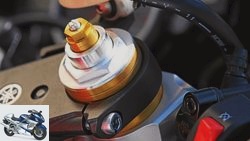
Workshop
The basics of chassis tuning
Instructions for trying it out
read more
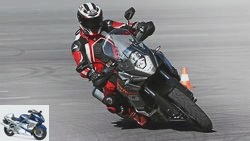
motorcycles
KTM 1190 Adventure with MSC from Bosch
Tried new lean ABS
read more
Cornering ABS of the BMW HP4
Aprilia RSV4 has an inkling of what the driver will do next
Time to take a look at the motorcycles individually: Aprilia has mainly revised the engine for the 2015 season and has gained 20 hp more than the 2013 RSV4 Factory. This is accompanied by a considerable strengthening of the range from 10,000 rpm. The new RSV4 has lost something below 4500 rpm, but it can cover up this loss on the racetrack. The chassis of the RSV4 has always been exceptionally good – accurate, handy and stable. This is only a weak description of the magic of the Aprilia driving experience. You’d think that the RSV4 can guess what the driver is about to do next and do it in exactly the right thousandth of a second. At the points of contact between the driver and the motorcycle, not only the normal sensitive, but also telepathic processes seem to take place.
In addition, there is an extremely safe front section. You can’t even imagine overstraining the grip of the front tire because you would feel it beforehand. This chassis in connection with the stronger engine creates the conditions for the excellent lap times of the Aprilia RSV4 RF. The test machine made a small faux pas: the clutch caused problems due to an incorrectly secured and therefore loosened central nut and had to be replaced. At this point, a thank you to Aprilia dealer Thomas Grebenstein from Gera.
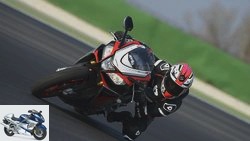
Super athlete
Aprilia RSV4 RF (2015) in the driving report
The best for last?
read more
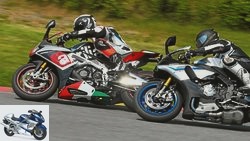
Super athlete
Aprilia RSV4 RF and Yamaha YZF-R1M in comparison test
Racing duel of the giants
read more
Delicate braking behavior of the Yamaha YZF-R1
In terms of front suspension, the Aprilia RSV4 RF, the Yamaha YZF-R1 and the Ducati 1299 Panigale S are similar. Unlike the Aprilia, however, the Yamaha achieves the torque drop described in the previous tests, which ranges from around 5500 rpm to 7200 rpm and thus in areas that are also relevant for the racetrack. Between 6000 and 8000 rpm, the curves of the Yamaha YZF-R1 swing higher than those of the Aprilia RSV4 RF, which however irresistibly pulls away beyond the 10,000 mark. The gruff response of the Yamaha four-cylinder, which this test specimen also showed, was also not helpful in the hunt for fast lap times. The fascinating running culture of the crossplane four-cylinder, however, does. The Yamaha engine needs high revs, but it also delivers them willingly. And its special sound motivates the driver more than a loud exhaust system.
Another point, of course, is the braking behavior of the Yamaha YZF-R1, which is tricky in some situations. Several riders had their “moment” as the English MotoGP commentators would say. That is the moment when they no longer hit the right line because of a rear wheel that was rising rapidly or was turning sideways. In contrast to the Honda Fireblade SP and the Aprilia RSV4 RF, this behavior is not due to the tuning of the ABS, but to the emphatically front-heavy design, the deeply bent seating position and the short wheelbase, together with the Suzuki GSX-R 1000 the shortest of the comparison . Although the Aprilia ducks its riders just as radically over the front wheel as the R1, it stays on track better when braking hard.
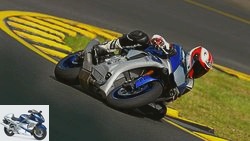
Super athlete
Yamaha YZF-R1 in the driving report
The Empire Strikes Back
read more
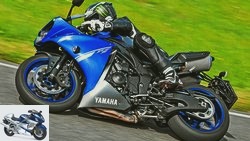
Super athlete
Zonko’s attack on the Yamaha YZF-R1
Too fat for this world
read more
Fast and smooth laps with Ducati 1299 Panigale S.
The Ducati 1299 Panigale S does the same. For both Italians, the longer wheelbase may play a role. The specialty of the new Panigale is that you have to develop its qualities in longer training units. At first, you don’t get along well with the rumbling engine running, the sitting position leaning forward on the almost straight handlebars and the rather bony suspension in race mode. Little by little, you learn to appreciate the exceptional leadership qualities of the Ducati chassis, the powerful brakes, the many electronic helpers such as the shift assistant described above. And the enormous torque of the engine. So everything comes together in wonderfully fluid and fast laps.
Although the top riders preferred to use the factory chassis settings in Race mode, the author set the semi-active damping of the Ducati 1299 Panigale S to the “softest” level in this mode and found this setting to be better in the long, wavy curves because it was more comfortable and still tight. In the run-up to this test, representatives of other manufacturers had complained that the Panigale had actually excluded itself from this race track comparison with its displacement increase to 1285 cm³, but we are not at the Superbike World Cup and would also be against a 1100 four-cylinder or a 1000 cc Compressor do not object. Unfortunately, the Kawasaki H2 was not yet available.
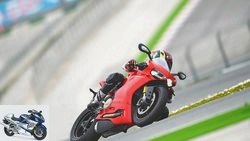
Super athlete
Ducati 1299 Panigale S in the driving report
Sports cannon through and through
read more
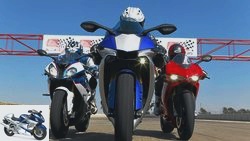
Super athlete
BMW S 1000 RR, Ducati 1299 Panigale S and Yamaha YZF-R1 in a comparison test
Circuit comparison
read more
BMW S 1000 RR begins to pump significantly at the rear
While the Aprilia RSV4 RF, Ducati 1299 Panigale S and Yamaha YZF-R1 as radical racing motorcycles require enormous physical effort from their pilots, the BMW S 1000 RR, Honda Fireblade SP, Kawasaki ZX-10R and Suzuki GSX-R 1000 are more conciliatory. A few centimeters more handlebars compared to the seat allow a more comfortable position. This group is led by BMW, which is expanding its range of comforts with its gently responsive, extremely high-torque engine. This makes driving fast almost comfortable, especially since the revision of the chassis has made the S 1000 RR very easy to handle.
We don’t know how the BMW engineers manage to get an almost unbelievable 212 hp of top performance from the almost brawny series four-cylinder. The engine builders of the other manufacturers apparently neither did. Nevertheless, the BMW S 1000 RR cannot outrun its competition on the racetrack; in fact, it has to place itself behind the Aprilia and Ducati in terms of lap times, roughly on a par with the Yamaha. This is mainly due to the strange behavior of the rear suspension. When accelerating in an inclined position, the BMW S 1000 RR begins to pump significantly at the rear. It quickly goes through to the tire, and then she literally wedges out with her hindquarters. This hinders the driver in the acceleration zones, as a recording of turn eight shows. From the apex, the Aprilia and BMW S 1000 RR accelerate in parallel, but at a certain point the BMW stops for a moment while the Aprilia continues to accelerate. At the same point near the curbs, the Aprilia is a short time later 177 km / h – including the Suzuki, by the way – while the BMW only reaches 171 km / h here. She is catching up again, but cannot take advantage of her superior performance in this situation or after the following corners.
Experiments with the individual setting of the semi-active damping could not completely stop pumping. The mildest it occurred with rebound and compression levels in setting – 4. This suggests that the cause is less to be found in a basic setting that is too soft, but rather in an unsuitable adjustment curve. Whether a BMW S 1000 RR with a conventional chassis would behave better?
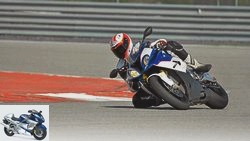
Super athlete
BMW S 1000 RR in the driving report
Heavily revised Bayern Express
read more
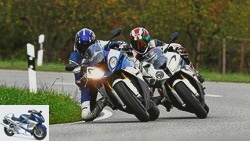
Super athlete
BMW S 1000 RR old versus new in the test
All things new. But also better?
read more
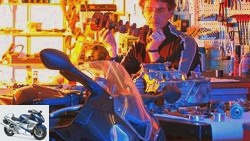
Super athlete
The super sports car from BMW after 50,000 km
Endurance test final balance: BMW S 1000 RR
read more
Honda Fireblade SP keeps steering the smoothest
More top performance would hardly overwhelm the chassis of a Honda Fireblade SP. In the speed range with which you accelerate out of bends and put real pressure on the chassis, the Fireblade is already pushing hard among the strongest. And when the others pull away on the straight path to the next bend, she is also doing short wheelies, is jostled just as hard by the bumps, but keeps the steering the smoothest of all. The Fireblade was the first female athlete to have an electronically controlled steering damper, and it still works best – documented by onboard video. The braking stability has already been praised, and what’s even better is that it is not bought at the price of stubborn steering behavior. “It drives nice, tight lines, the handling can stay that way,” stated Christian Kellner.
The joint wish list for the Honda Fireblade SP is: modern sensors, a lighter, less defensive ABS, traction control, a shift assistant. More efficient. 195 hp with a full torque curve would be enough if you wanted to continue to exercise restraint, as is typical for Honda. Oh yes, and a gentler load change would also be quite pleasant.
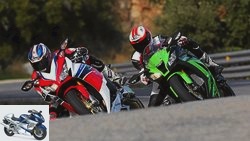
Super athlete
Honda Fireblade SP and Kawasaki ZX-10R in the test
High-performance reactors on country roads and racetracks
read more
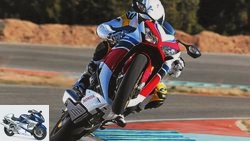
Super athlete
Honda Fireblade SP in the PS performance test
Prettified, smoothed and lifted
read more
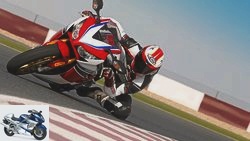
Super athlete
Honda CBR 1000 RR Fireblade SP in the driving report
Refinement and Precision
read more
There is great potential in the Suzuki GSX-R 1000
Aside from the last point, Suzuki fans would probably put together a similar wish list for the GSX-R 1000 and add three exclamation marks. Because recently, Suzuki has been less inclined than Honda to invest in the further development of the athletes. The Suzuki GSX-R 1000 offers a very good basis, as confirmed not only by the recording but also by the driving experience. At the entrance to the curve, in the middle and in a wide area of the acceleration zone, the deliberately manageable Suzuki drives with the Aprilia RSV4 RF without difficulty. The damping had to be tightened to the edge of the adjustment range, but not beyond. And since ABS was on board, Suzuki even dares to install snappy brake pads.
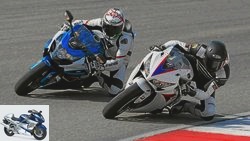
Super athlete
The last four-cylinder without control electronics
Test: Honda Fireblade against Suzuki GSX-R 1000
read more
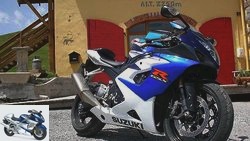
Super athlete
Endurance test final balance Suzuki GSX-R 1000
Gixxer charm
read more
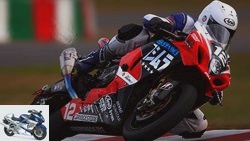
Super athlete
Yoshimura-Suzuki GSX-R 1000 track test
The hell of Suzuka
read more
Kawasaki ZX-10 R with weak torque
There are two reasons the Kawasaki ZX-10 R rides like the antithesis of the Suzuki GSX-R 1000 and Honda Fireblade SP: steering head angle and caster. 65 degrees is unusually flat, 107 mm is unusually long. The ZX-10R drives with exemplary stability, but has real disadvantages when turning or in the three narrow hooks of the Lausitzring. The torque weakness already described is also reinforced by the long translation of the lower gears, so that the Kawasaki is the only one in the tight corners before the back straight or in the chicane before the start / finish to have to shift down to first gear. It could probably show off its driving stability and its remarkable top performance better on a more fluid course with fast corners, and better hide the harsh load changes.

Super athlete
Honda Fireblade SP and Kawasaki ZX-10R in the test
High-performance reactors on country roads and racetracks
read more

Super athlete
BMW HP4, Kawasaki ZX-10R, MV Agusta F4 RR
Top super sports cars from BMW, Kawasaki and MV Agusta
read more
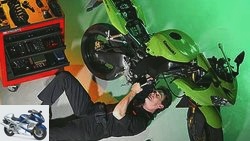
Super athlete
Endurance test final balance of the Kawasaki ZX-10R
Too good to be stripped
read more
The fascination of super athletes, the fascination of the racetrack
This super sports track test of Aprilia RSV4 RF, BMW S 1000 RR, Ducati 1299 Panigale S, Honda Fireblade SP, Kawasaki ZX-10R, Suzuki GSX-R 1000 and Yamaha YZF-R1 should not end without describing a situation that says a lot about the fascination of the super athletes: It was in the afternoon of the second day when one of the testers needed a break after riding four motorcycles in a row. He sat down in the box, suckled on a water bottle, nibbled on a banana, perspired and stared into space. On the home straight, two four-cylinder engines screeched past at high revs, from the other side the rumble of the Ducati could be heard, catapulting itself from curve to curve. It acted like a signal. Irresistibly dressed, the man grabbed his helmet and gloves, got on the nearest motorcycle, and sped away. To the next fast lap.
Tires at the racetrack test
Bilski
Salvo Scandurra (left) and Hendrik Muller take care of the black gold. They assembled 14 sets of Metzeler Racetec RR.
You have earned an extra text, the Metzeler Racetec RR, on which this test was run. Because they harmonized very well with all motorcycles, offered excellent grip and remained easy to control at a high level even in a badly maltreated condition. On the first day, the Racetec RR in the hard K3 compound, which is also unrestrictedly approved for road use, was used to roll in and set up the motorcycles. This tire already earned unanimous praise, even from the pros.
The lap times were determined the following day on new tires in the K2 compound, which are good for about one and a half seconds per lap on the Lausitzring. They also held out for the rest of the day without dramatically losing grip. And anyway: as a hobby racer, you first have to discover what these tires can do. But please with high concentration and in small steps. Then amazement and maximum driving pleasure are guaranteed.
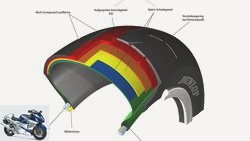
tires
PS knowledge tire dictionary
The ABC of tires
read more
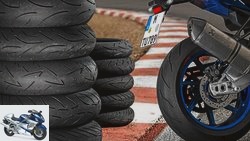
tires
PS sports tire test 2014
Six sports tires in comparison
read more
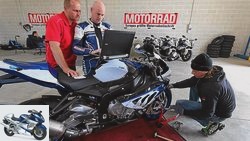
tires
6 sports tires tested (120/70 ZR 17 and 190/55 ZR 17)
High-tech import from racing
read more
Driver, route, data
Bilski
The testers v. l .: Ralf Schneider, Rainer Froberg, Christian Kellner, Karsten Schwers, Freddy Papunen, Sergio Romero and Thomas Schmieder.
Although he is a lightning fast driver, our Spanish colleague Sergio Romero comes very close to our idea of the “normal driver” in one point: He reacts sensitively to details and characteristics that seem strange to him on a motorcycle. That distinguishes a good tester. So when he comes closer to the times of Christian Kellner and Freddy Papunen with the BMW S 1000 RR than with any other machine, but with the Ducati 1299 Panigale S remains so far away than with any other, then that says a lot about him Character of the motorcycles. The BMW makes it easy to drive fast, the Ducati takes a long time to get used to. Much longer than an outlap, three timed laps and a return to the pits.
Bilski
Sketch of the Lausitzring from a bird’s eye view.
To explain the table with the lap times: The numbers in brackets under the respective time indicate the place that each motorcycle occupies in the individual ranking of each driver. All three drivers achieved their personal fastest time with the Aprilia RSV4 RF, their slowest with the Suzuki GSX-R 1000 and so on.
If you analyze the values in the speed table below, the secret of Aprilia’s success seems easy to explain: apart from a single point where it is at least not slower than the competition, it is the fastest everywhere else. That speaks for a successful overall package that the competition could not bring together in this balance.
The reference points one to four each denote the end of the acceleration phases, but are also an expression of the previous history. For example, the lower speed of the BMW S 1000 RR despite the superior engine power at point one is explained by the pumping of the hindquarters described in the test report, which braked the S 1000 RR heavily in the undulating section at the beginning of the home straight.
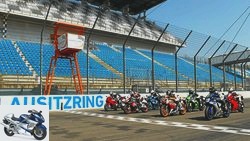
Super athlete
Seven super athletes in the track test
Part 1 comparison test on the racetrack
read more
The Lausitzring
Bilski
Based on series for US racing cars, the outer route is a tri-oval. But on the inside it gets damn curvy.
You will never forget this sight, surreal like in a video game: to thunder at full throttle along the huge main grandstand of the Lausitzring. It is 368 meters long and 35 meters high and holds 25,000 spectators alone. Behind it, the almost 200-meter-high wind turbine rotates majestically in the Brandenburg sky. Anyone can have this experience. From the beginning of May to the end of September there is always free driving on Monday evenings from around 6 p.m. to 9 p.m. 15 minutes on a street-legal motorcycle costs 19 euros, 5-person tickets 90 euros and 10-person tickets 160 euros, available on site and at www.lausitzring-shop.de
In addition, Germany’s fourth and easternmost permanent race track also offers professional sports driver training courses from April to September. Instructors teach the right line based on driving level. Info: www.lausitzring.de/motorradtrainings. It is charming to work on your driving skills where the International German Motorcycle Championship (IDM) has been a guest since the opening in August 2000 and races of the fiery Superbike World Championship have already started.
Cross route, lake landscape, visitor mine
From the “Speedway Inn” course restaurant on the main stand, you can enjoy a good overview of the impressive race track. It offers a total of ten route variants: from the 3.2-kilometer US-style Trioval to the 11.3-kilometer long-distance route, including a test oval next to the actual race track.
On the 4 km2 area of the EuroSpeedways Lausitz there is even a 1.8 kilometer long enduro / motocross track, which offers free training on Wednesdays, Saturdays and Sundays. In addition, the Race and Style Lauchhammer e. V. off-road training for children on Fridays from 4 p.m. to 6 p.m., with quads, children’s crossers and clothing provided. The region between Dresden and Berlin also offers a lot in other ways: 20 lakes with around 140 square kilometers of water surface were created from former areas of the brown coal opencast mine. The Lusatian Lakeland, Europe’s largest artificial water landscape, invites you to hike in the water and spend the night, followed by the Spreewald in the north. Info: www.reiseland-brandenburg.de
Impressive industrial culture: In the F60 visitor mine in Lichterfeld there is a 502-meter-long, 11,000-tonne giant of technology. The former overburden conveyor bridge F60 conveys the history of lignite mining in Lusatia. Info: www.f60.de. The track’s own “Hotel / Restaurant Landhaus” is stylish. It offers 16 beautiful double rooms from 44 euros and fine cuisine at low prices. Tel. 03 57 54/64 30, www.landhaus-meuro.de
MOTORCYCLE test results




34 photos
Pictures: Seven super athletes in the track test
To home page
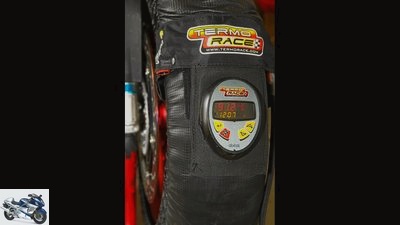
Bilski
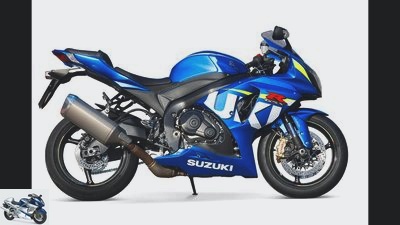
Bilski
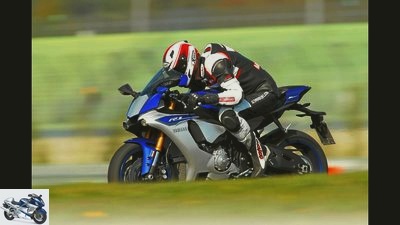
Bilski
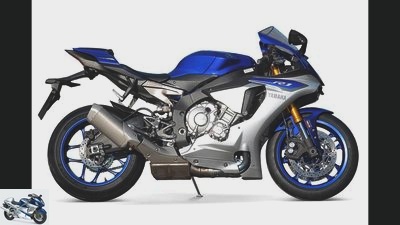
Bilski
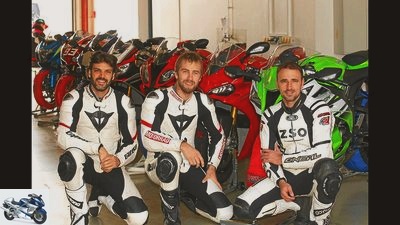
Bilski
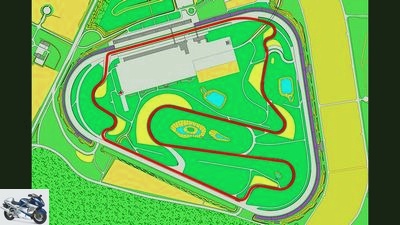
Bilski
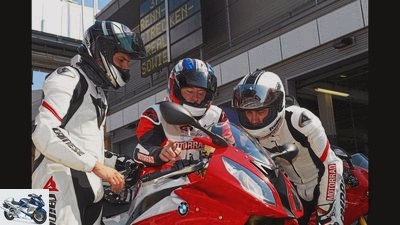
Bilski
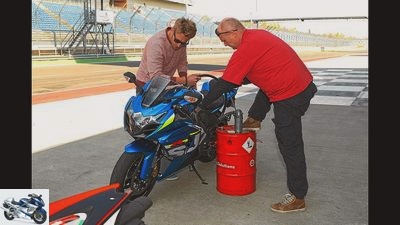
Bilski
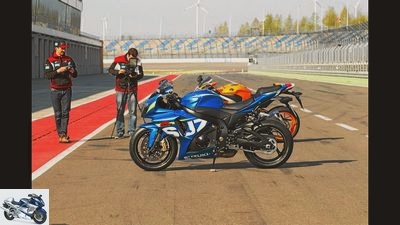
Bilski
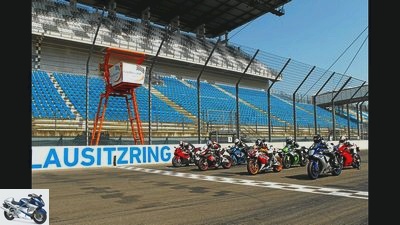
Bilski
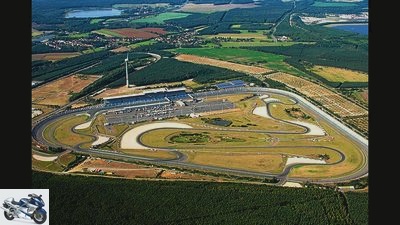
Bilski
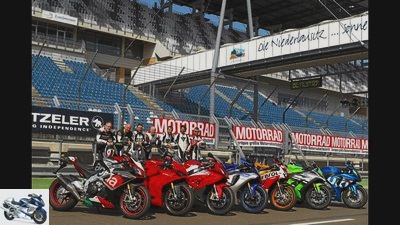
Bilski
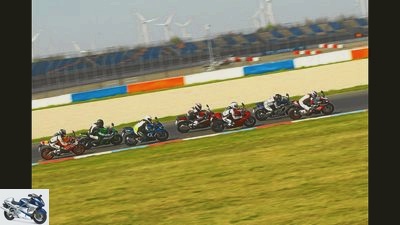
Bilski

Bilski
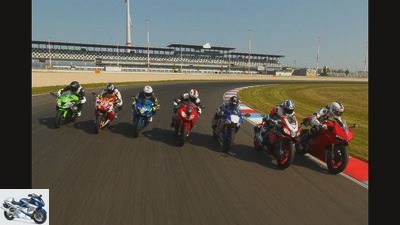
Bilski
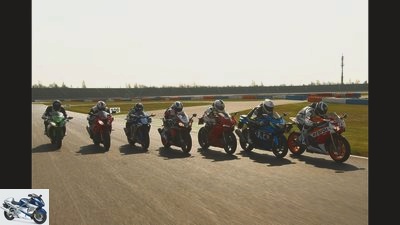
Bilski
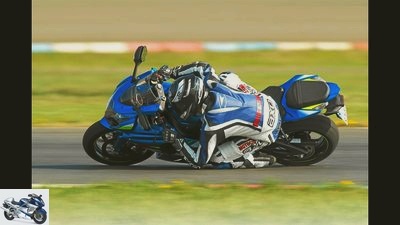
Bilski
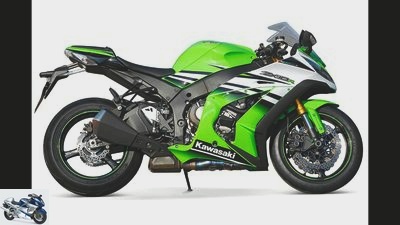
Bilski
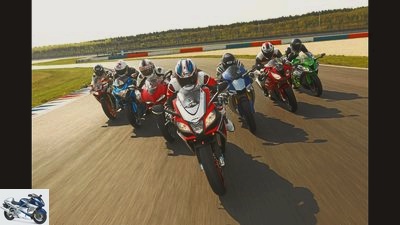
Bilski
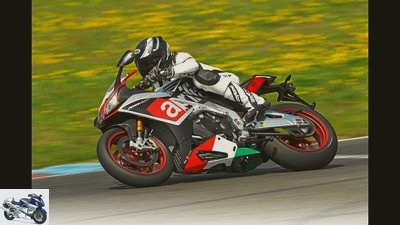
Bilski

Bilski
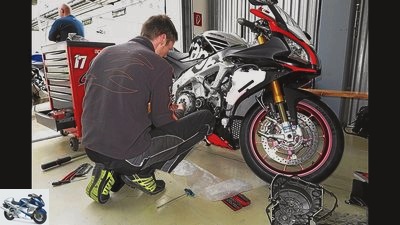
Bilski
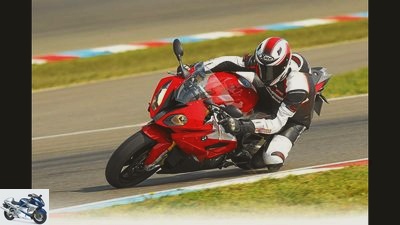
Bilski
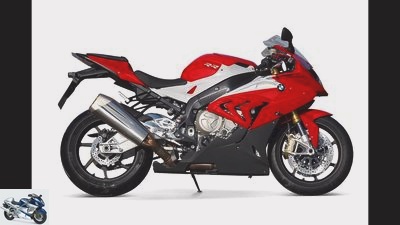
Bilski
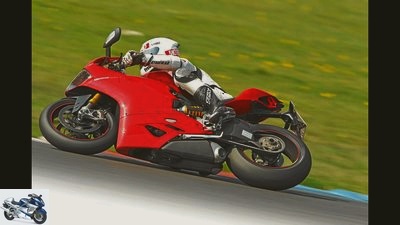
Bilski
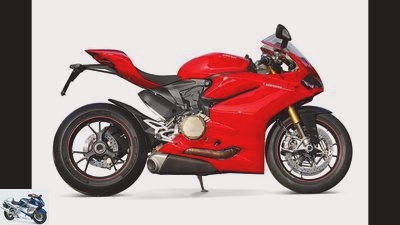
Bilski
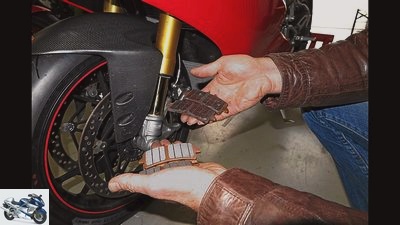
Bilski
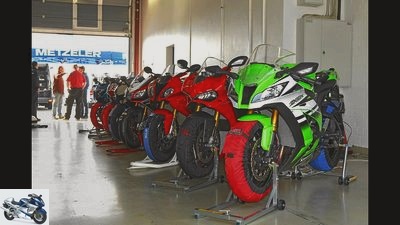
Bilski
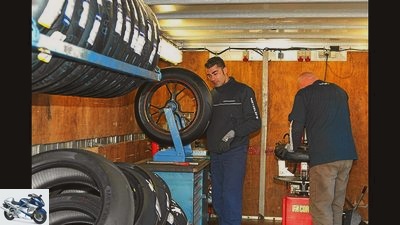
Bilski
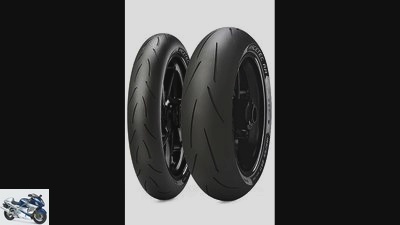
Bilski
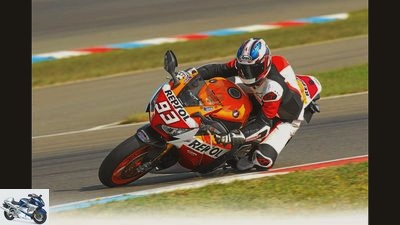
Bilski
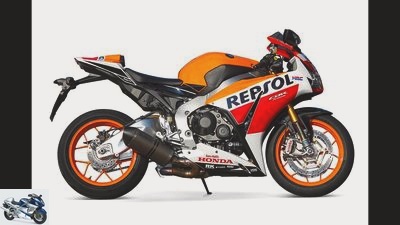
Bilski
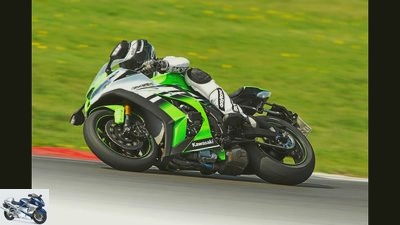
Bilski
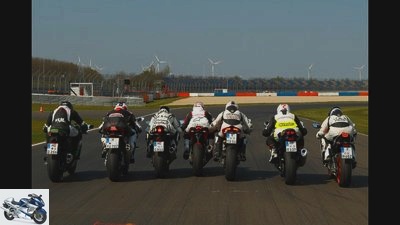
Bilski
Related articles
-
Comparison test: Epochal motorcycles
fact 9 pictures fact 1/9 Honda CBR 900 RR Fireblade: Back then and now a nuisance: The idiosyncratic 16-inch front wheel worsens handling with …
-
Test of the Superbikes 2012 – The super athletes on the racetrack
Jahn 26 pictures Jahn 1/26 The super athletes: Aprilia RSV4 Factory APRC, BMW S 1000 RR, Ducati 1199 Panigale S, Honda Fireblade, Kawasaki Ninja ZX-10R, KTM …
-
Comparison test: Germany is looking for the superbike
Jahn 42 pictures Jahn 1/42 Top handling and transparent feedback make the BMW S 1000 RR what it is. She also has a lot of electronic …
-
Comparison test of the 1000 super sports car
Jaime de Diego 38 pictures fact 1/38 Yamaha demands 14895 euros for their completely new R1 super sports car. fact 2/38 Even without ABS, the Fireblade would …
-
Comparison test of the 1000 super sports car, part 2
Jahn comparison test 1000 super sports car, part 2 The street sweepers Fun country road surfing, everyday operation, sober cost-benefit calculation ?? in the…
-
Seven superbikes in the racetrack test
r-photography.info 46 photos r-photography.info 1/46 Aprilia RSV4 RF, BMW S 1000 RR, Ducati 1299 Panigale S, Honda Fireblade SP, Kawasaki ZX-10RR, Suzuki…
-
Comparison test: the diary of the mega test
Jahn 42 pictures Jahn 1/42 Top handling and transparent feedback make the BMW S 1000 RR what it is. She also has a lot of electronic …
-
2017 super sports car in the country road comparison test
fact 28 pictures factstudio.de 1/28 The 2017 superbikes were just dueling on the racetrack, now the focus is on the country road …
-
Jahn comparison test of supersports: Ducati 998, Honda Fireblade, Kawasaki ZX-9R, Suzuki GSX-R 1000, Triumph Daytona 955i Centennial The K-Question Five …
-
Nine power naked bikes in a comparison test
fact 57 pictures fact 1/57 Simple, good: excellent readable instrument cluster with analog tachometer and the most important digital. fact 2/57 The …